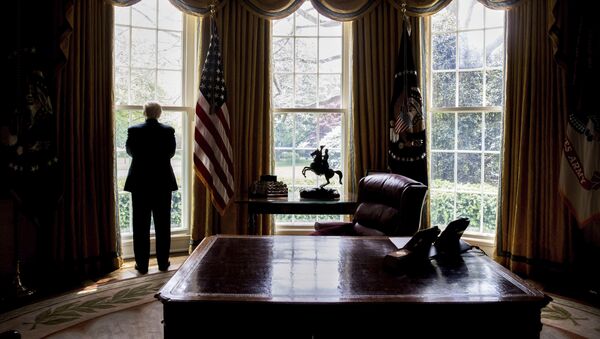The filibuster has gathered no shortage of critics over the years: A Harvard Crimson op-ed pointed to the legislative procedure as "Tyranny of the Minority," while other news outlets have run headlines about the practices such as, "Senate’s Abuse of Filibuster Rule Threatens Democracy," "Filibuster Abuse: Founding Fathers Didn’t Plan It This Way," and "Filibuster, Gone Rogue: A Senate Rule That Cripples Our Democracy."
After a rare lull in which Trump refrained from tweeting bombastic 160 character messages to the world – his staff managed to keep his schedule full during his first trip abroad, cutting into his tweeting time – he was back at it again on Tuesday.
— Donald J. Trump (@realDonaldTrump) May 30, 2017
Trump called for getting rid of an “archaic” Senate rule stipulating that measures need to get 60 votes to reach the president’s desk. Since Democrats and Republicans rarely hold more than 60 seats for a given Congress, the procedure promotes bipartisan compromises.
But here’s the thing: the embattled and much vilified American Health Care Act already only needs 51 votes to pass the Senate. The votes aren’t there. The GOP’s slim 52-48 majority has seen a number of the bill’s detractors open defect on this issue from Republican ranks. The deal maker’s problem is not Democrats, but getting Republicans to coalesce on a single piece of health-related legislation.
It’s also possible to pass tax reform with 51 votes. As with the AHCA, passing a new tax code as part of the budget reconciliation process only needs a simple majority. There’s little evidence to suggest Trump has a robust plan for condensing and simplifying the tax code. His administration put out a one-page document of tax policy talking points (“eliminate tax breaks for special interests,” “provide tax relief to American families”) that was widely derided by lawmakers and policy analysts across the spectrum as little more than banal strategic guidance.
Disparaging the filibuster has been used as a political tactic by lawmakers on both sides of the aisle. In a 2010 interview with Huffington Post, then-Speaker of the House Nancy Pelosi called the fillibuster “the 60-vote stranglehold on the future."
“Getting from where the nation is, to a sustainable place, would require with doing away with the filibuster,” the California Democrat said.
At the time, of course, Pelosi’s Democrats faced similar circumstances as Republicans do now: majorities in both chambers of Congress paired with a Democrat at the helm in the Oval Office. Despite the momentum this could generate for a political agenda, internal party fractures and requirements for 60 votes in the Senate all but blocked many of former President Barack Obama’s priorities. The same issues now threaten Trump’s agenda to revamp healthcare and the tax code.
The Republican supermajority could be a once-in-a-lifetime opportunity to move the direction of American policy toward the GOP’s aims, Republican strategists told Sputnik.
Senate Majority Leader Mitch McConnell used the “nuclear option” to end filibustering for judicial appointments. The move allowed Neil Gorsuch to slot into the late Justice Antonin Scalia’s seat on the Supreme Court, a lifetime appointment. Massachusetts Democrat Senator Ed Markey said he would lead an effort to restore the judicial filibuster should his party retake control of the upper chamber of congress.




